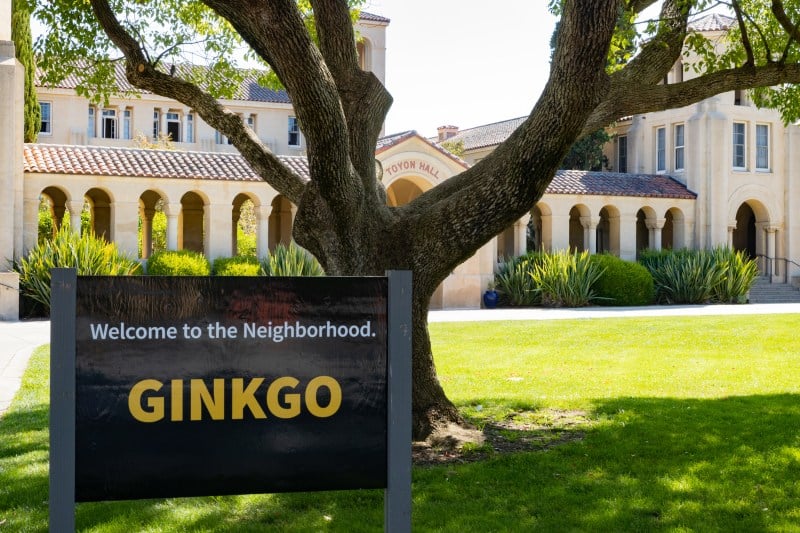This academic year marks the third since the tumultuous launch of the neighborhood system and the first where frosh will enter neighborhoods with finalized names, newly established traditions and a wash of funds.
Last year, the neighborhood system saw a wave of criticism from students over the limited housing options and lack of neighborhood identities. The neighborhood naming ideation sessions were sparsely attended, and only 30% of undergraduates voted on the list of finalists.
Frosh entered a system widely disliked by students — even as administrators attempted to improve the neighborhoods. “I think the other frosh don’t like the neighborhood system because they were told to not like the neighborhood system,” Rush Bogin ’27 said.
While many students continue to express mixed feelings around the new system, some Ginkgo residents are taking the new name in stride.
The word “gink,” a short-hand for “ginkgo,” has spread through Fizz as an unofficial nickname for Gingko residents. Fizz users were quick to point out that the name could function as a diminutive, with some joking it was “offensive” or “discriminatory.”
“Only Ginkgo residents can use ‘gink,'” said Bogin, a Ginkgo resident. “Whenever I hear another neighborhood resident using the word ‘gink,’ I get a little hurt inside.”
This is not the first humorous off-shoot of the new neighborhood names. After the names were announced last quarter, students quickly poked fun at the new acronym spelled out by the neighborhood names — SHAGWORM — which replaced its predecessor, STANFORD. One student even made merchandise featuring SHAGWORM and its unsavory anagram, WHORGASM.
The finalists for neighborhood names were curated by neighborhood councils — the groups of students and administrators that decide funding and programming for each neighborhood. Neighborhood councils will begin to reconvene this week. According to an email from director of communications Pat Lopes Harris, several houses already applied for funding.
ResX also created a new neighborhood website with information about acquiring funding for students, residences or organizations, Harris wrote. Last year, residents used funding to purchase house furnishings or refreshments for parties. Aspen used a substantial amount of their funding to host “HEATWAVE,” an all-campus party that cost around $92,000.
“The neighborhoods should fund parties,” said Mehmet Tascioglu ’26, a sophomore in Aspen and former intern for Neighborhood T. “They should fund frat parties for the frats within the neighborhoods so we can keep doing that and having fun times.”
Some neighborhood events — like the third annual round of neighborhood barbecues held during the first week of the quarter — have already drawn many attendees across all four classes, who flocked to the events for free food.
“I partook in around four neighborhood barbecues,” said Aspen resident Alexander Ekpo-Otu ’26. “I didn’t want the food to go to waste.”
Though the neighborhood system is now in its third year, many upperclassmen are struggling to forget what many viewed as a stressful housing process. While students were offered a one-year pilot of a neighborhood reassignment process, students were guaranteed neither their top choices for reassignment nor any reassignment at all.
Students can only choose housing spaces in residences within their neighborhood, a rule which some perceive as limiting the options.
After receiving a late housing draw time, Tascioglu was separated from his intended roommate. By the time he opened the portal, there were no empty two-room doubles left in Aspen for Tascioglu and his two-person draw group.
“Last year, I was working for the neighborhood system and I got to see some of the events that were put on and the hard work that got into it,” Tascioglu said. “But being at the bottom of the system and treated as just another draw helped me realize this system has some imperfections that need to be straightened out.”
With the new start to the neighborhood system, there may also be new changes. Last year, ResX created the Neighborhoods Task Force to identify problems with the current system and propose solutions. The committee will release their suggestions on Dec. 8, while proposed changes will begin in the 2024-2025 school year.
Until then, students can participate in focus groups held by the task force, according to Stanford Report. Each student will receive “a meal and $30” to share their individual neighborhood experiences with the task force, the report wrote.
For some frosh, it may be too late for ResX to sway opinions on the neighborhood system: “I came into the system knowing that people hated it,” Bogin said. “I had a negative perspective on it, but I hadn’t even experienced it yet.”
